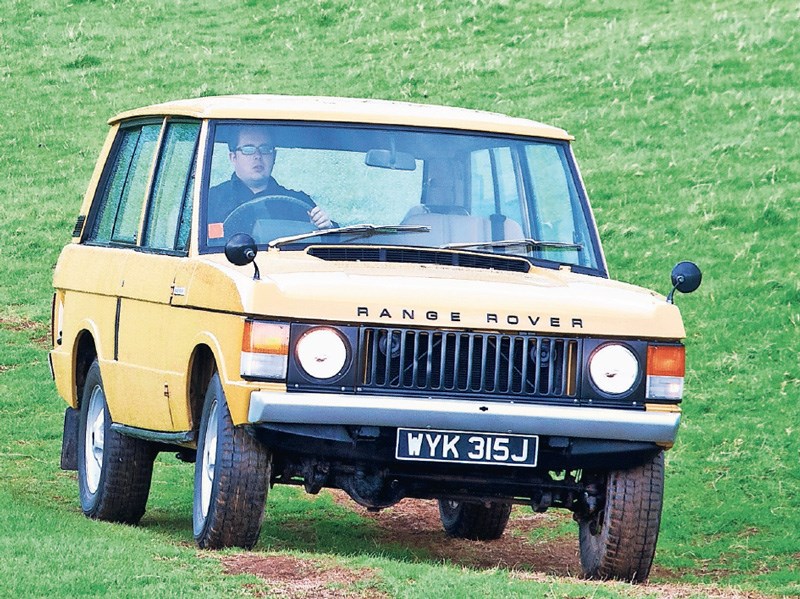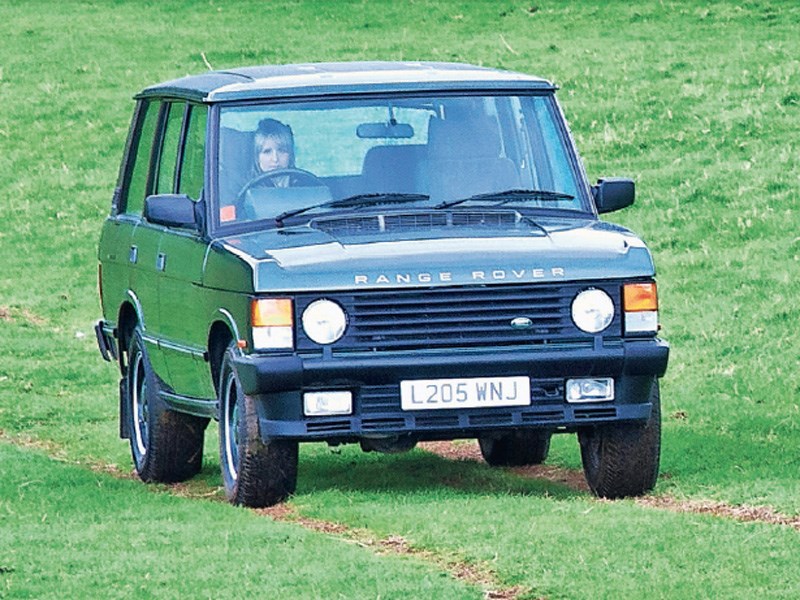So, you are looking to buy a Range Rover Classic, but which one is best? One of the first Range Rovers from the early 1970s or a last of the line example draped in luxury and technology? Time to don the wellie boots and find out…
It isn’t easy being ‘the most versatile motor car in the world’ – the exact phrase Solihull used to coin its new 4x4 masterstroke back in 1970. The problem is, the outdoor types demand more and more luxuries every year, rivals chomp away at your lead and – as happened with the Discovery in 1989 – younger siblings from the same factory wade into the territory you used to call your own. It’s no wonder the Range Rover has refused to stand still, constantly evolving to stay ahead of the game – in fact, it’s had to change shape three times to arrive at today’s Rolls-Royce of the rough stuff.
While the two cars you see here share the same basic underpinnings, an identical wheelbase and Rover’s muscular V8, they represent very different stages in the venerable Range Rover’s evolution. The 1970 two-door is here to represent Solihull’s original, uncorrupted vision of an upmarket offroader, while the 1993 Vogue is the final stage of its evolution into an executive express, before David Bache’s rugged, boxy outline gave way to the second-generation Project 38a model. One thing has always remained constant – the ability to chew through tricky inclines, tow horseboxes and carry a fortnight’s worth of outdoor clobber with a touch of class. Here, we ask the same question posed by different generations, and with very different answers. But which is better?
Let Battle Commence.
Clamber up into the cabin of the earlier car and there’s a metallic clank as you close that long driver’s door behind you. The fact it gently echoes around the interior gives you an idea of how lightly trimmed it is – there’s PVC cladding, head restraint-free seats for four, two dials, a spindly three-spoke steering wheel and not much else. But that’s how its creators intended it – it’s more comfortable than the contemporary Series IIa, but don’t be fooled by the David Bache penned Rover styling cues on the outside that this is going to be a P6-on-stilts on the inside.
Its plastic moulded dash is unapologetically functional, and the trade-off for having thin, rubber mats you can hose down after a mucky day’s greenlaning is that the 3.5-litre V8’s rumble wafts into the cabin the moment you twist the ignition key. You work that long, slightly agricultural feeling gearlever – the gearknob itself soars up from the transmission tunnel, and meets your hand at about the same height as the steering column – and go for a drive. You hear the gentle whine from the transmission and listen to the various knocks and bumps of the components doing their individual jobs, but unlike the Land Rovers of the same era you don’t feel them jolting you around – it’s no wonder Solihull eventually rolled out the Range Rover’s coil suspension to all its other models.
There is body roll through the corners, but not as much as you might expect, and the Range Rover’s flat sides and great visibility mean you can confidently place it on even the narrowest of country lanes. The unassisted steering is weighty and responsive, but be warned – it’s hard work if you need to do a tight manoeuvre. It’s the more tiring of the two to drive but there’s something wonderful about the way it immerses you in what it does. It’s a truly talented all-rounder that struts its stuff in a way that’s comfier and more long-legged than the Land Rovers we were all used to back in 1970 – but it doesn’t pretend to be anything else.
It’s a very different animal from the Vogue, which wasn’t even the range-topping Range Rover when it rolled out of the showroom back in 1993 but does everything in its power to soothe your brow and insulate you from the outside world. You can tell from the dashboard that it’s descended from the original but it has been given a 1980s boardroom makeover.
Where the two-door’s has two circular air vents, the Vogue weighs in with five far wider rectangular units, and a chunkier, two-spoke wheel cloaks an instrument binnacle which squeezes a rev counter into the two-dial setup. The transmission tunnel – literally just that in the original, offering up a gear lever, ratio selecter and a rudimentary ashtray – has been festooned with cubby boxes and electric window switches, with a short, stubby selector to access the four-speed automatic.
Everything about it feels plusher, more cocooned, and the 3.9-litre engine – still a Rover V8, but this time with EFi fuel injection – starts with a murmur rather than a thunder, settling into a gentle purr when you’re out on the open road. It’s easier to live with in the corners, thanks partly to the steering being power assisted on the later cars and due to the front and rear anti-roll bars fitted as standard after 1991. Stopping shouldn’t be an issue too, as this car was specced up with the Range Rover’s first ever ABS braking system (although it was standard fit on the even plusher Vogue SE). It’s easy to forget once you’re settled into the veloured contours of the later Range Rover that you’re in the green wellies world of off-roaders – once you discount the commanding driving position the experience is so effortless you could easily be in an XJ6 or an E-class of the same era.
The two-door majors on ruggedness while the Vogue hones in on refinement, but you’ll be delighted to know they’re on a fairly level playing field on the bit that sets the Range
Rover apart from all of its swish executive car rivals – off road. The identical ground clearance, approach angles and four-wheel-drive system means there really isn’t much in it, although the four-speed manual of the earlier car is always going to give you a little more control than the Vogue’s auto will.
The only real difference is that getting muck out of the Vogue’s interior trimmings will be more of a pain, but even our brief test showed both cars are more than capable of tacking a boggy hillside in Warwickshire with aplomb. Try saying that about a Jaguar XJ6.
The Verdict
So you’re the marketing man’s favourite – one of the ‘business and professional people, with a leaning towards the great outdoors’ openly wooed by Solihull in the opening pages of the Range Rover’s launch brochure. Lucky you! You’ll need a swish set of wheels to greet you as you leave the company headquarters in Manchester on a Friday night, ease your brow as you pop home to pick up the family and your sturdiest outdoor clobber, and then power effortlessly up the M6 en-route to a weekend of hiking/fishing/sailing in the Lake District.
For that, the Vogue is all the Range Rover you could ever ask for, representing all your outdoor luxury aspirations with a single shimmer of its Ardennes Green paintwork. Certainly, the Vogue is the better car, but the original two-door is the better Range Rover. It feels more alive and – perhaps because you have to live with its heavy steering, minimal trimmings and noisier drive – is infinitely more rewarding.
It’s better looking, too – the 1994 car is a wonderfully proportioned, handsome brute that brings a dash of Countryfle to even the dowdiest multi-storey landscape, but the shape looks so much better freed of all the 1980s clutter and Morris Marina door handles. The original Range Rover has to win not because it’s the best luxury off-roading vehicle of the two in this head-to-head appraisal, but because it has an insatiable appetite for making you smile with its ability to shrug off anything you ask of it. It is the E-type of the great outdoors.


